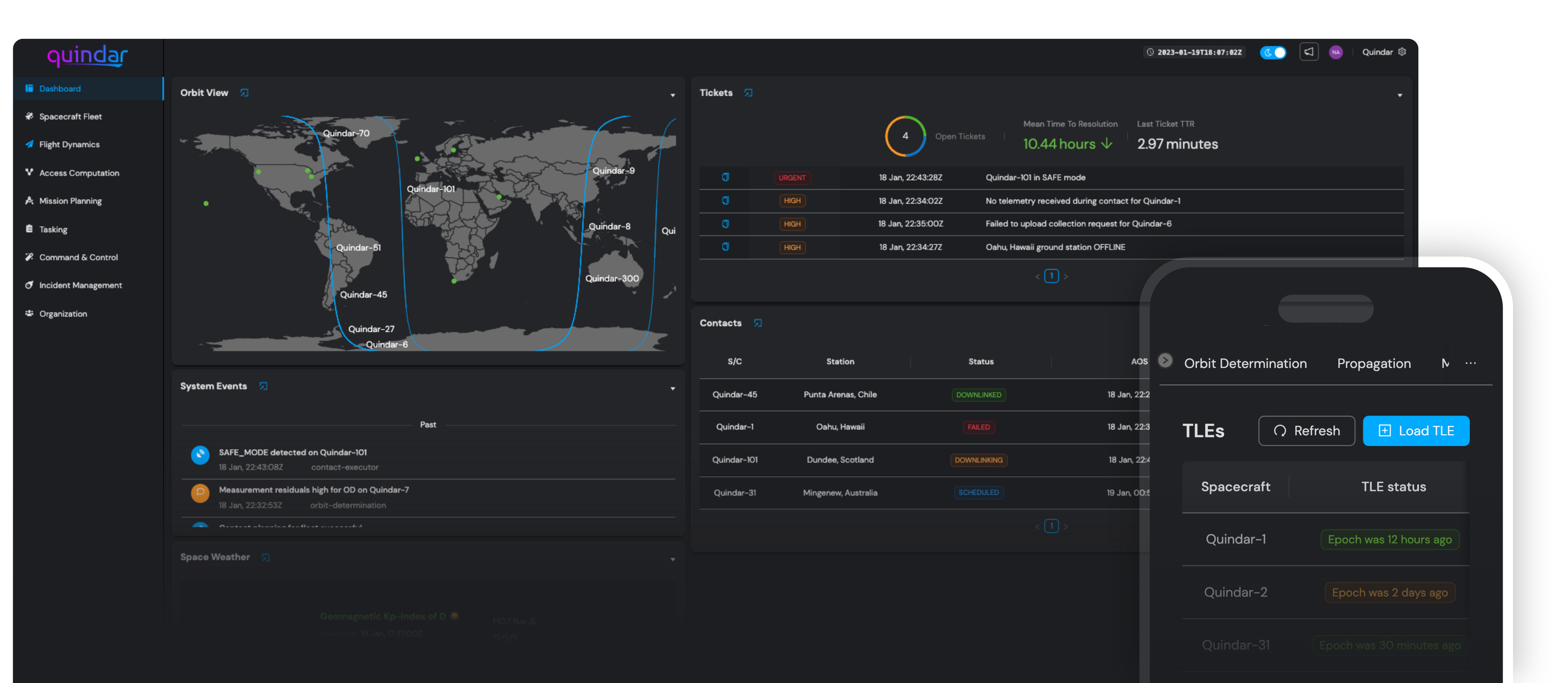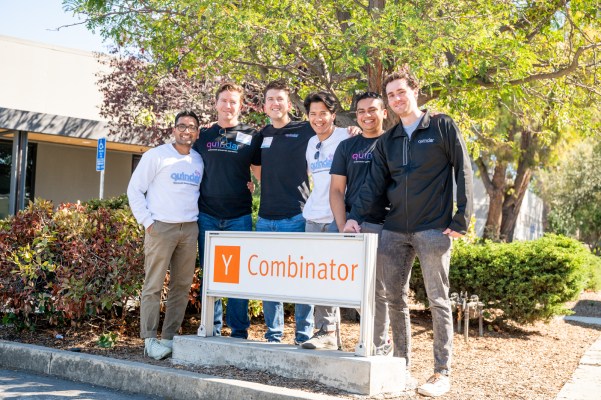It’s never been cheaper to send a spacecraft to orbit, but many companies are hamstrung by the complex and expensive demands of satellite mission management. Quindar wants to change that. The company, which just closed $2.5 million in seed funding, has built a web app for end-to-end satellite operations that it says will enable its customers to get to orbit — and market — faster.
Quindar’s six co-founders met while working at British satcom company OneWeb, where they helped develop its satellite operations platform. There, they saw what Quindar CEO Nate Hamet referred to as “red flags”: large amounts of human capital devoted to mission management, along with engineers doing make-buy trades on products that were onerous to integrate and scale.
“No one was making this streamline solution and simplifying such a complex workflow, that they had to integrate bespoke products and create what they believe to be the best solution,” Hamet said in a recent interview with TechCrunch. “Instead, we’re building that core foundation and baseline as essentially a single service.”
The company, which is based in Denver but is remote-first, graduated from Y Combinator last year. With six co-founders, all with technical backgrounds, Quindar has been able to build out its core product in a matter of months, rather than years. The company’s seed round was oversubscribed before YC’s Demo Day, Hamet said.
The co-founders include Matt Regan, head of operations; Dave Lawrence, head of strategy; Sunny Bhagavathula, head of product; Shaishav Parekh, head of infosec; and Zach Meza, head of engineering. The seed round includes capital from Y Combinator, FCVC, Soma Capital and Liquid 2 Ventures.
Quindar’s value proposition is not just that its web app makes mission management easier; Hamet says that companies can also skip hiring software developers and engineers and use those cost savings — up to a third of the cost of traditional mission management solutions, according to Hamet — toward other parts of their business.

Image Credits: Quindar
The number and span of solutions Quindar is hoping to provide is ambitious. The company’s software platform — what Quindar calls “Mission Management as a Service” — can help startups design their mission, test the satellites, integrate with ground stations, and operate the spacecraft through its life in orbit. It’s providing what Hamet called a “forever commitment”: “This isn’t something that’s just getting you to launch,” he said. “It’s for the five to ten years lifetime of your mission.”
Quindar is already working with customers, some on a pilot basis. Right now, the company is focused on working with startups that don’t yet have assets in space, though Hamet said they intend to also work with companies with satellites in orbit. Customers with existing satellites can also use slices of Quindar’s platform for specific functions, like flight dynamics, to mitigate the risks of migrating their software to a whole new platform.
Quindar’s currently focused on hiring — the first hires for the six-person-founded company — with open positions for a front-end engineer, site reliability engineer and test engineer. Looking ahead, Quindar is also planning on expanding its offerings to government and commercial customers.
The end goal, according to Hamet, is for Quindar “to host all of your software … similar to how AWS revolutionized hosting servers as a service. We’re doing that for the aerospace community.”
